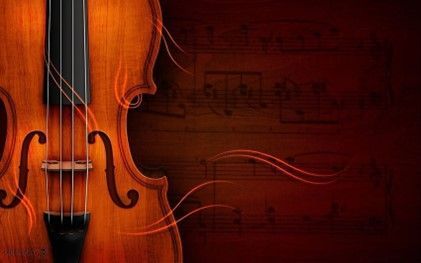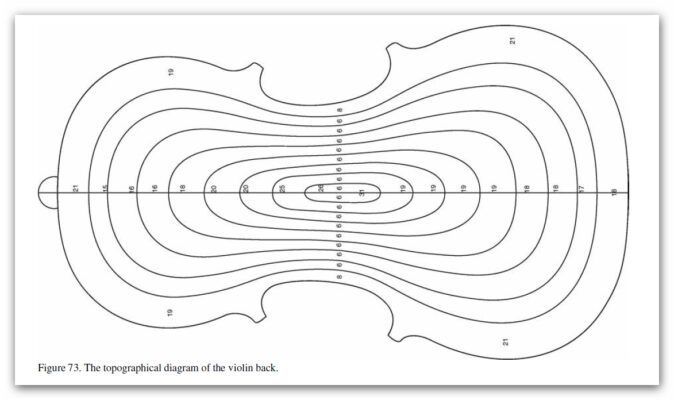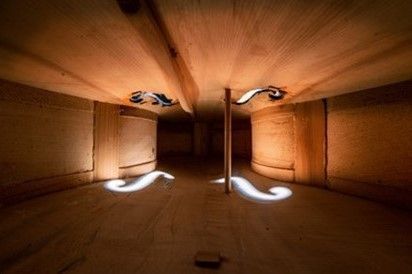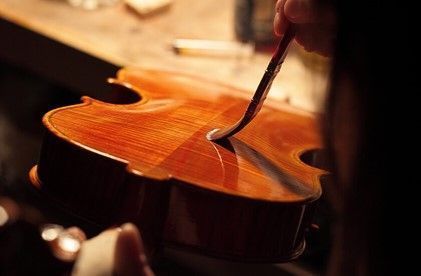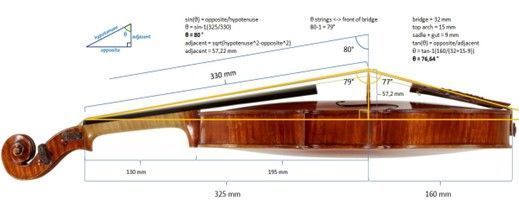Wood Charachteristics & Selection
The role of wood selection in the construction of violins is of utmost importance as it significantly impacts the instrument’s sound quality, resonance, and overall performance. Here is a deeper exploration of the role of wood selection for violins:
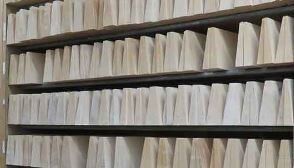
Violin Wood Components
Top (Soundboard)
The choice of wood for the top of the violin, also known as the soundboard, has a profound impact on the instrument’s sound. Spruce is the most commonly used wood for violin tops due to its excellent strength-to-weight ratio, allowing it to vibrate and resonate effectively. The grain structure, density, and age of the spruce can influence the tonal characteristics, projection, and responsiveness of the instrument. Fine-grained spruce is often preferred for its ability to produce a clear and resonant sound.
Fingerboard
Ebony is preferred for the fingerboard due to its hardness, durability, and smooth surface. The fingerboard’s role is essential for facilitating accurate intonation and precise fingering, allowing the musician to achieve optimal tonal quality and playability.
Soundpost and Bass Bar
While not directly related to wood selection, it’s worth mentioning that the soundpost and bass bar inside the violin also influence the instrument’s sound quality. The soundpost, usually made of spruce, is strategically placed to optimize the transfer of vibrations and enhance the instrument’s tonal response. The bass bar, typically made of spruce or maple, supports the soundboard and helps distribute vibrations across the instrument, contributing to its tonal projection and resonance.
Back and Sides
The back and sides of a violin are typically made from maple. Maple is prized for its density, stability, and visual appeal. The flame or figure in the maple contributes to the aesthetic beauty of the instrument. The choice of maple affects the instrument’s tonal qualities, as well. Highly figured maple, known as “tonewood,” is often favored for its enhanced resonance, projection, and tonal complexity. The density and stiffness of the maple contribute to the instrument’s overall response and sustain.
Conclusion
Each piece of wood used in the construction of a violin is carefully selected for its specific characteristics and tonal properties. The grain pattern, density, age, and quality all contribute to the instrument’s overall sound quality, tonal complexity, and responsiveness. The craftsmanship and expertise of the violin maker in working with the chosen woods play a significant role in bringing out the best sonic qualities of the instrument.
Neck and Scroll
The wood used for the neck and scroll of a violin also plays a role in the instrument’s sound production. Maple is commonly used for these components due to its strength and stability. The choice of maple affects the weight distribution and balance of the instrument, influencing its playability and responsiveness. Additionally, the aesthetics of the neck and scroll contribute to the overall visual appeal of the violin.
Ultimately, the careful selection allows for the creation of an instrument with distinct tonal characteristics, responsiveness, and resonance. It is a crucial factor in the construction process that enables violin makers to craft instruments capable of producing the nuanced and captivating sound sought after by musicians and enthusiasts.
Address
3863B S. Campbell
Springfield, MO 65807
Phone

